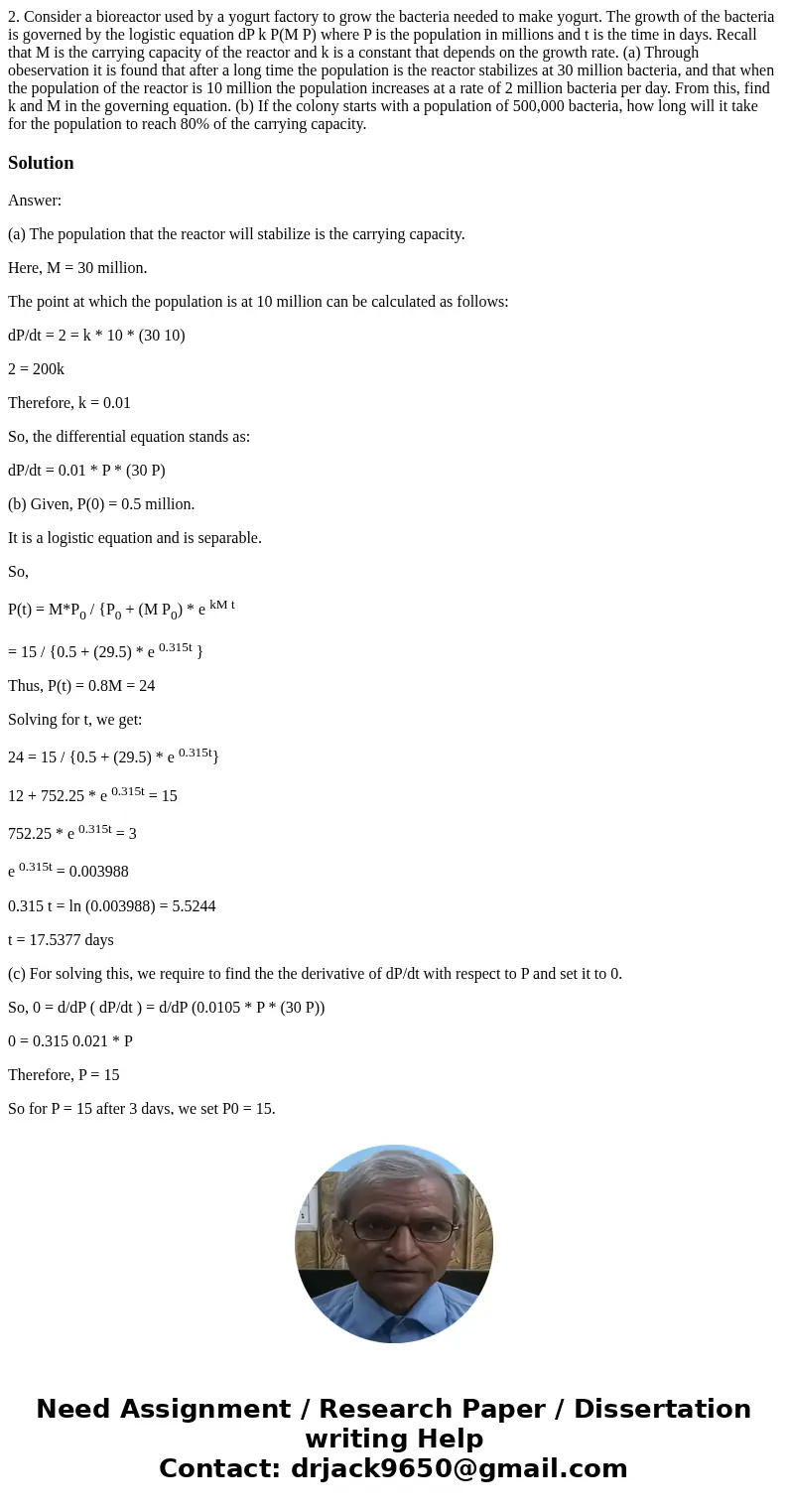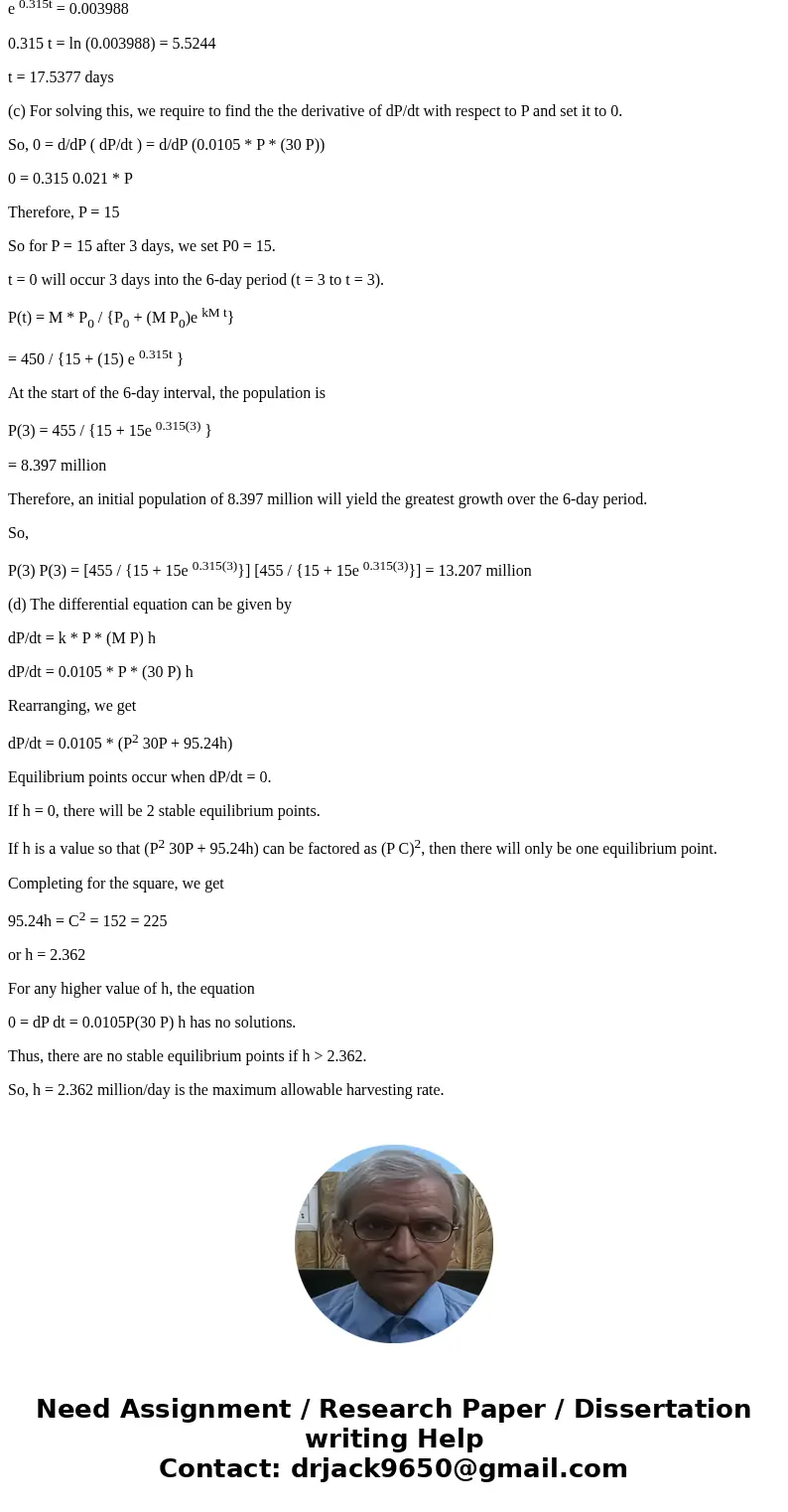2 Consider a bioreactor used by a yogurt factory to grow the
Solution
Answer:
(a) The population that the reactor will stabilize is the carrying capacity.
Here, M = 30 million.
The point at which the population is at 10 million can be calculated as follows:
dP/dt = 2 = k * 10 * (30 10)
2 = 200k
Therefore, k = 0.01
So, the differential equation stands as:
dP/dt = 0.01 * P * (30 P)
(b) Given, P(0) = 0.5 million.
It is a logistic equation and is separable.
So,
P(t) = M*P0 / {P0 + (M P0) * e kM t
= 15 / {0.5 + (29.5) * e 0.315t }
Thus, P(t) = 0.8M = 24
Solving for t, we get:
24 = 15 / {0.5 + (29.5) * e 0.315t}
12 + 752.25 * e 0.315t = 15
752.25 * e 0.315t = 3
e 0.315t = 0.003988
0.315 t = ln (0.003988) = 5.5244
t = 17.5377 days
(c) For solving this, we require to find the the derivative of dP/dt with respect to P and set it to 0.
So, 0 = d/dP ( dP/dt ) = d/dP (0.0105 * P * (30 P))
0 = 0.315 0.021 * P
Therefore, P = 15
So for P = 15 after 3 days, we set P0 = 15.
t = 0 will occur 3 days into the 6-day period (t = 3 to t = 3).
P(t) = M * P0 / {P0 + (M P0)e kM t}
= 450 / {15 + (15) e 0.315t }
At the start of the 6-day interval, the population is
P(3) = 455 / {15 + 15e 0.315(3) }
= 8.397 million
Therefore, an initial population of 8.397 million will yield the greatest growth over the 6-day period.
So,
P(3) P(3) = [455 / {15 + 15e 0.315(3)}] [455 / {15 + 15e 0.315(3)}] = 13.207 million
(d) The differential equation can be given by
dP/dt = k * P * (M P) h
dP/dt = 0.0105 * P * (30 P) h
Rearranging, we get
dP/dt = 0.0105 * (P2 30P + 95.24h)
Equilibrium points occur when dP/dt = 0.
If h = 0, there will be 2 stable equilibrium points.
If h is a value so that (P2 30P + 95.24h) can be factored as (P C)2, then there will only be one equilibrium point.
Completing for the square, we get
95.24h = C2 = 152 = 225
or h = 2.362
For any higher value of h, the equation
0 = dP dt = 0.0105P(30 P) h has no solutions.
Thus, there are no stable equilibrium points if h > 2.362.
So, h = 2.362 million/day is the maximum allowable harvesting rate.


 Homework Sourse
Homework Sourse